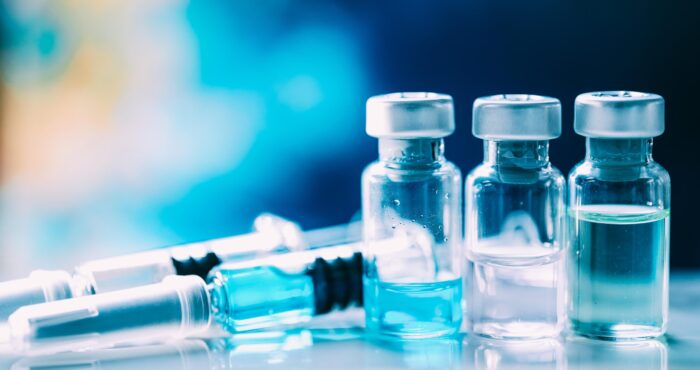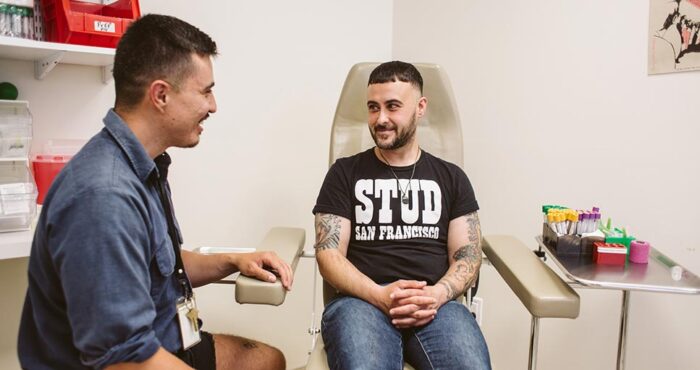For people having anal sex, PrEP 2-1-1 is effective at preventing HIV
Daily use of PrEP reduces the risk of HIV infection by up to 99%. Yet there are a few factors that may keep people from seeing daily PrEP as an option: the high cost of Truvada, an aversion to long-term or daily medication use, or infrequent sex.
“On-demand” PrEP—also known as PrEP 2-1-1—is an alternative method of dosing that may speak to these concerns, making PrEP an option for more people than ever before. PrEP 2-1-1 is named for its schedule of dosing: 2 pills of Truvada are taken 2-24 hours before sex, 1 pill 24 hours after the initial dose, and one final dose 24 hours later (find more info about this strategy). PrEP 2-1-1 is effective for: people who bottom during anal sex; and people who top during anal sex; people who top during front hole or vaginal sex. PrEP 2-1-1 is not effective for people who bottom during front hole or vaginal sex. At this time, we do not have enough data to support the use of Descovy for PrEP 2-1-1–it is only for use with Truvada.
“We want folks to know about PrEP 2-1-1 because this dosing strategy has been evaluated substantially in Europe and elsewhere, and available data show 2-1-1 works well when done correctly,” said Chris Hall, MD, vice president of medical affairs at San Francisco AIDS Foundation. “2-1-1 is likely to be a better fit for many people having less frequent sex, compared to taking medication once day.”
Here’s what we know about how well PrEP 2-1-1 works to prevent HIV infection.
Comparison between daily PrEP and 2-1-1 dosing
Being conducted in the Paris region of France, the Prevenir study is providing solid answers about exactly how effective PrEP 2-1-1* is. The study, which is ongoing until 2020, has enrolled mostly men who have sex with men (and a few trans people and heterosexual people) to compare daily PrEP with PrEP taken around the times of sex.
Participants are able to choose which regimen they take, and are able to switch back and forth during the study. The researchers are measuring HIV infections, PrEP adherence, if each sexual encounter is “covered” by PrEP, and sexual behavior.
Study results presented at the AIDS 2018 conference included data from 1,629 participants, with 443 patient-years of daily PrEP use and 506 patient-years of PrEP 2-1-1 use. The average amount of follow-up time in this analysis was seven months.
Adherence to both strategies was high. “Correct use” at last sexual intercourse was reported by 95.8% of people taking PrEP daily and 96.2% of people taking PrEP 2-1-1.
There were zero HIV infections among people taking daily PrEP, and zero HIV infections among people taking PrEP 2-1-1. The HIV incidence rates for daily and 2-1-1 dosing were both 0 per 100 patient-years. The researchers estimated that 85 HIV infections were averted during the course of this portion of the study.
Because people were able to choose which dosing strategy they wanted to use, the researchers found differences in who was using each strategy. As might be expected, people taking PrEP daily were having more frequent sex than people who opted for PrEP 2-1-1 (people taking PrEP daily also tended to have more partners).
Summary: In a study with more than 1,500 people followed for about 7 months, PrEP 2-1-1 was as effective as daily PrEP with neither strategy resulting in any HIV infections.
*In the Prevenir study, the researchers described the dosing strategy as PrEP “on-demand” instead of as PrEP 2-1-1. The dosing strategies are the same.
The first PrEP 2-1-1 study: PrEP 2-1-1 compared to placebo
The most well-known and first PrEP 2-1-1/on-demand study, named IPERGAY, was conducted in France and Canada with men who have sex with men and transgender women between 2012 and 2016. The randomized controlled portion of the study included 414 participants and the open-label follow-up included 361 participants.
An early analysis of the unblinded study data during the randomized controlled portion of the study found that the 2-1-1 regimen significantly reduced HIV risk compared to placebo, so the study was quickly changed to allow everyone access to PrEP 2-1-1. Final study results presented in 2015 showed that PrEP 2-1-1 reduced risk of HIV infection by 86% compared to placebo.
Two people acquired HIV taking PrEP 2-1-1 during this portion of the study (compared to 16 people in the placebo group). However, the researchers did not detect the PrEP medication in plasma samples taken from these individuals, which led the researchers to believe the two people were not taking PrEP around the time of their infections.
The continuation of the study (called the “open label” phase) provided a real-world look at how people might use PrEP 2-1-1. Participants were followed for an average of 18.4 months, and the study collected a total of 518 person-years of data.
One HIV infection happened during the open label phase of the study, in a person who likely had not taken PrEP for many months when he was diagnosed.
Overall, this part of the study found that PrEP 2-1-1 reduced risk of HIV infection by 97%.
One lingering question after IPERGAY study results were released involved the effectiveness of PrEP 2-1-1 for people having sex less frequently (and therefore taking PrEP less frequently). Many people in IPERGAY reported frequent sex—at least one sexual encounter per week—which resulted in taking 4 pills per week or about 16 pills per month. Does PrEP 2-1-1 work even if you aren’t taking that many pills on average per month?
To share the answer this question, lead IPERGAY researcher Jean-Michel Molina presented the results of an IPERGAY sub-study in 2017. The sub-study included people in IPERGAY who used less than the median number of pills per month by people in the entire study. These people had an average of five sexual encounters per month and took an average of 9.5 pills per month.
Even among these people taking PrEP less frequently, there were zero HIV infections (compared to six infections among people included in a comparison placebo group)—leading the researchers to estimate a relative risk reduction of 100% for people who used PrEP 2-1-1.
Summary: In the first PrEP 2-1-1 study conducted in France and Canada, PrEP 2-1-1 was shown to effectively reduce risk of HIV infection among a few hundred men who have sex with men and a very small number of trans women.
The take-aways
Large clinical trials have shown that PrEP 2-1-1 is an effective way to prevent HIV infection. When used correctly, PrEP 2-1-1 is as effective as daily PrEP for people having anal sex.
Most studies of PrEP 2-1-1 have mostly included men who have sex with men, and very small numbers of transgender women. It is less certain how well PrEP 2-1-1 works for people having vaginal sex.
The International AIDS Society-USA endorses PrEP 2-1-1 as do clinical guidelines in France, the UK, Canada and Australia. The FDA in the U.S. has not reviewed, and has therefore not approved PrEP 2-1-1.
Sources
Molina, J.M. and colleagues. Efficacy, safety, and effect on sexual behaviour of on-demand pre-exposure prophylaxis for HIV in men who have sex with men: an observational cohort study. Lancet, 2017.
Molina, J.M. and colleagues. On-demand preexposure prophylaxis in men at high risk for HIV-1 infection. NEJM, 2015.
Molina, J.M. and colleagues. Incidence of HIV-infection in the ANRS Prevenir study in Paris region with daily or on-demand PrEP with TDF/FTC. AIDS 2018.
—
San Francisco AIDS Foundation receives funding from corporate partners including those in the pharmaceutical industry. Editorial decisions on our blog and website are made independently. For more information about SFAF funding, please refer to our financial and tax documents.









